Dirt Bike Tech: Two-Stroke Seizure
A look at two-stroke engine seizure and why your piston can lock up solid
Congratulations, you just seized.
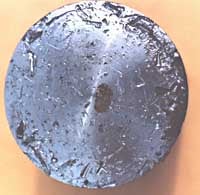
Obviously, sticking a piston just ruined a Sunday of riding for you, but don't blame it on the bike. That intricate mass of metal parts can only respond to the input you give it—if a human being didn't fill it with gas, fire it up and run it down the road, it would never seize. Something you did didn't agree with that bike, and throwing it down on the ground and stomping the gas tank flat won't make things any better. Instead, think of it as an initiation into the elite society of people who have been there, and who know that the whole experience is going to teach you a lot about the care and feeding of a two-stroke.
DON'T FOUR-STROKES SEIZE?
Yes, they do, but not nearly as often or spectacularly as a two-stroke. We're going to stick to two-strokes in this story, but the same basic principles apply to the cam-and-valve engines. Excess heat, bad lubrication, and too much air will have an effect on any engine, but on none so quickly as our modern two-stroke.
OKAY, WHAT MADE IT SEIZE?
You tell us—remember, it was something you did! The number one cause of seizure is poor maintenance. If you never pull the top end apart to check clearances, and you wind up letting the rings wear out and the bore get sloppy, the engine will soon start running so ratty that nothing is at the correct temperature anymore, and it could stick.
Along the same lines, if you never pull apart the carb to clean out the crud that may accumulate in the float bowl (from riding in lots of mud and water or letting dirt get into the gas tank), you could very easily clog the main and pilot jets. Clogged jets will cause a suddenly lean condition that almost always ends in seizure.
Let's take another typical example. You buy your bike new, and ride it all summer. Toward the end of the season it seems to be running badly … not real bad, just not up to snuff. So you figure it needs jetting, and you lean down the main and pilot, which seems to cure it. A lot of people do this, and they're making a big mistake. At the end of the summer, it starts getting cooler outdoors, right? And cool air is more dense than warm air, so if your jetting needs changing at all, it needs to be richer.
The problem is, the rings and the bore are starting to get sloppy, but the lean jetting makes it feel better, so everything's fine, right? Wrong. The first real cold day is the day you're taking a gamble on sticking it big.
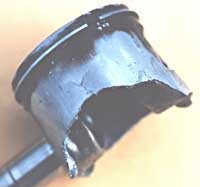
Now comes the good part. If it doesn't seize, you ride it the rest of the fall, and then put it away for the winter. Come spring, you're thinking about getting the bike all ready for the new season, and you decide to pop for a new piston and rings and a bore job. You put it all together on a fine spring morning and head out for a ride, and the thing seizes tight in the first two miles. Why? Because you had a nice, tight bore, full compression, and you never bothered to change back to the stock jetting. It was too lean. It seized.
The truth is, there are hundreds of ways to seize a bike, all caused by some form of negligence. For example:
•No oil, or bad oil in the gas. Pouring straight gas into the tank will do it every time. Using too little oil or junk oil is just as much of a risk.
Too much throttle at the wrong time. Starting a bike cold and holding it wide open down a fire road is a sure invitation to disaster. A minute or two of warm-up time adds greatly to the life of an engine.
•Air leaks: Ripped intake gaskets, holes in the intake manifold, bent or warped intake flange, or reed cage, blown crank seals, or any bad gaskets in the top end. Any stray air coming into a cylinder will cause a super lean condition, and you know what happens then.
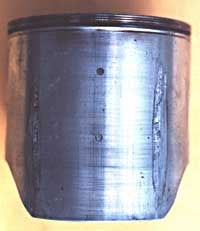
•Tolerances are too tight. Boring a cylinder and not leaving enough piston clearance will cause a seizure every time. It's also possible to get a piston that isn't made correctly and will refuse to fit even the best bore job, but this is rare.
Never knew there were so many ways to wreck an engine, did you? But, before you flee the country in fear, you should know that it's not all that difficult to avoid seizures. If you use good fuel, the right quanti-ty of quality oil, take the time to warm up your engine, don't make arbitrary changes in jetting, and fix it when it starts to rattle, you may never experience a stuck engine.
WHAT IS A SEIZURE, ANYHOW?
It can best be described as the piston refusing to fit the bore any longer. Any one of the problems we described is a case of too much heat in the wrong place at the wrong time, or a lack of lubrication. If the engine goes lean suddenly, the piston overheats and expands more rapidly than the cylinder, causing it to scrape on the cylinder walls. If it scrapes hard enough, it stops. Many, many seizures never stop the engine—you feel it slow down (tighten up), and you pull in the clutch or back off the throttle, and the engine burbles a bit and then runs clean again. These mild seizures aren't nearly as damaging as a total seizure, but if it happens you should still pull apart the engine to make sure the rings aren’t sticking, or the piston hasn’t been badly scuffed.
What about the so-called cold seizure? Don’t let the name fool you … too much heat is still the cause. It happens because the bike is fired up and run too hard right off the bat. The cylinder can’t keep up with the rapidly expanding piston. In the case of water-cooled bikes, a cause of cold seizure is uneven heating of the cylinder barrel.
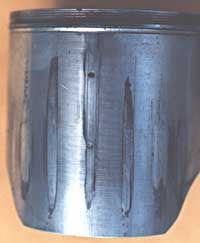 |
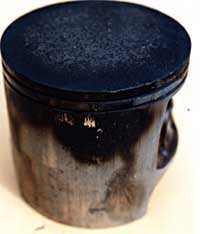 |
HOW CAN I TELL WHAT MADE IT SEIZE?
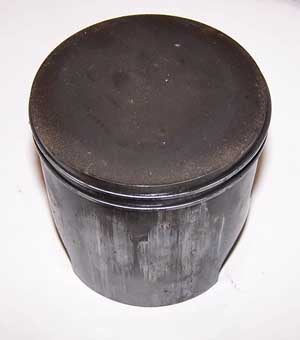
The best indication of what caused a seizure is the condition of the piston afterwards. Where it stuck in the barrel will give you a good idea of what caused it to stick. A good mechanic can look at a wrecked piston and put his finger on the cause right away, but to the untrained eye, all piston damage looks the same. The following is a rough breakdown of typical piston damage and its likely cause.
Four Corner Seizure: This seizure is so named because of the classic scuff marks on the piston—the piston is scuffed on both sides of the intake and exhaust skirts, but not in the middle of the skirts. Damage may only show up on three "corners." This is a good indication of a bore that’s too tight, or piston that’s too hot. It can also be caused by a brand-new piston in a worn-out bore. If you're going to replace the piston, bore the cylinder to fit it. If overheating was the cause, the heat will show up as burnt brown marks on the underside of the piston crown.
Bad scuffing on both the intake and exhaust skirts, aluminum is gouged and peeled, and may be sticking to the cylinder walls. This is caused by lack of lubrication. You may have been using straight gas, too little oil in the gas, or just plain lousy oil. If you want to cause some really bad damage, try mixing fork oil at about 100 to 1. Stick with a good two-stroke oil, and mix it according to the manufacturer's recommen-dations.
Scuffing on the exhaust side only: The bike is running too lean, whether it's caused by the wrong jetting, clogged jets, or an air leak. It can also be caused by using low-octane fuel when you have your bike jetted for the good stuff. Lean jetting is usually accompanied by a loud, ringy, "pinging" noise coming out of the cylinder when the bike is under a load. If it pings, shut it off and find out why it's running lean. If the bike idles at a high speed and refuses to idle down, you have an air leak somewhere. Fix it.
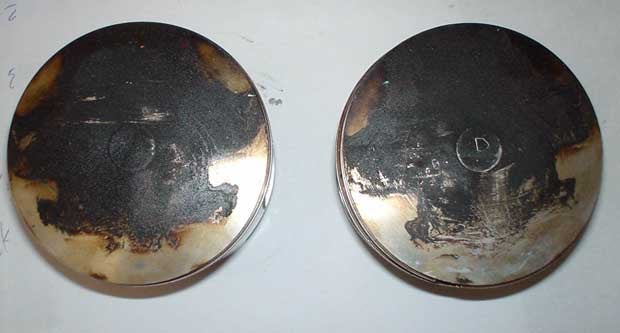 |
Scuffing on the wrist pin sides: This is caused by improper tolerances. Either the cylinder was bored too tight for the piston, or the piston is bad. You'll need some very precise instruments to measure everything out and find the cause. Your best bet is to take the barrel and piston to a shop that specializes in cylinder boring and have them check it out.
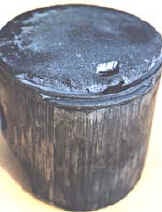 |
 |
Hole in piston: This is not technically a seizure, because you can hole a piston without it ever really seizing to the cylinder walls. It is caused by detonation, as a result of the timing being too far advanced, a spark plug that’s too hot, or far too much carbon on the head and piston. This can be accompanied by a ridge eaten out of the combustion chamber, and parts of the head gasket eaten away. Bore it and replace the piston; then check the timing and the heat range of the plug. Clean carbon off the piston and head more often.
Broken piston skirts: This can also happen without a seizure and is a classic example of a totally worn-out engine. It's usually accompanied by the statement, "I can't understand it; the bike ran on that piston for 8000 miles without a problem." Next time, get a piston and bore job at 4000 miles.
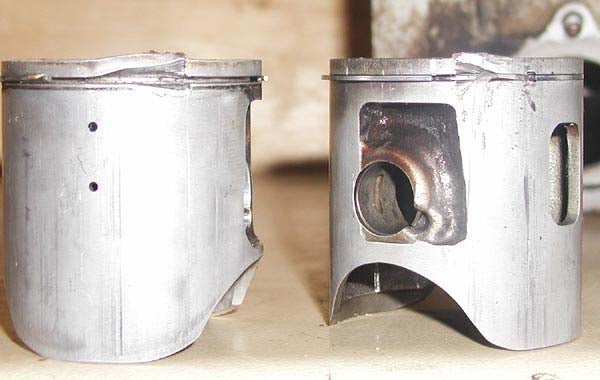 |
Seized big-end bearing: If you pull the cylinder and everything seems to look fine except that the connecting rod won't move, you seized the big-end bearing. This kind of seizure is caused by foreign matter in the bearing, or an air leak at the crank seals, usually the one on the transmission side. To fix it, you have to split the cases and rebuild the crank. No fun at all, not to mention the expense involved.
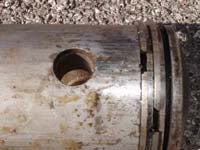 |
 |
SO WHAT DO I DO NOW?
Find the cause of the seizure and fix it. If the seize wasn't bad—if there are only light scuff marks on the piston—you can sand down the scuff marks with #600 wet or dry sandpaper, put it back together, and go riding. If you pulled a bad seizure on a fresh bore, you may be able to get away with a new piston and rings after lightly honing the cylinder. Have everything measured, just to be sure.
In the case of a real sticker, where there's aluminum smeared all over everything and the piston looks as if it's been dragged behind a truck, you'll need to go the full nine yards: new piston, rings, wrist pin and clips, and have the connecting rod checked by someone who knows what he's doing. And once you get it all buttoned back up, don't make the same stupid mistake again.
Pay attention to what kind of fuel and oil you put in your bike. Pull regular maintenance—keep the inside of the carb and fuel tank, as well as the air filter, clean, and don't be afraid to pull off the head now and then to clean away the carbon. Keep in mind that a well-seized piston is a neat thing to handle, look at, and bench-race over ... but not when it comes out of your bike.


 Your Privacy Choices
Your Privacy Choices